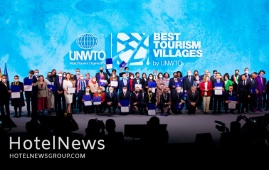
The best examples of villages embracing tourism to provide opportunity and drive sustainable development have been celebrated at the World Tourism Organization (UNWTO) General Assembly in Madrid. The Best Tourism Villages by UNWTO initiative was launched to advance the role of tourism in safeguarding rural villages, along with their landscapes, natural and cultural diversity, and their local values and activities, including local gastronomy. A total of 44 villages from 32 countries across the five world regions were granted the recognition in 2021. All of them stand out for their natural and cultural resources as well as for their innovative and transformative actions and commitment to the development of tourism in line with the Sustainable Development Goals (SDGs). The villages were evaluated by an independent Advisory Board based on a set of criteria covering nine areas: - Cultural and Natural Resources - Promotion and Conservation of Cultural Resources - Economic Sustainability - Social Sustainability - Environmental Sustainability - Tourism Potential and Development and Value Chain Integration - Governance and Prioritization of Tourism - Infrastructure and Connectivity - Health, Safety and Security All of the 44 chosen villages scored a total of 80 or more points or more out of a possible 100. Tourism as a driver of rural development and inclusion “Tourism can be a driver of social cohesion and inclusion by promoting a fairer distribution of benefits throughout the territory and empowering local communities,” says UNWTO Secretary-General Zurab Pololikashvili. “This initiative recognizes those villages committed to making tourism a strong driver of their development and wellbeing”. The Best Tourism Villages by UNWTO initiative includes three pillars: The ‘Best Tourism Villages by UNWTO’: Recognizes villages which are an outstanding example of a rural tourism destination with recognized cultural and natural assets, that preserve and promote rural and community-based values, products and lifestyle and have a clear commitment to innovation and sustainability in all its aspects – economic, social and environmental. The ‘Best Tourism Villages by UNWTO’ Upgrade Programme: The Upgrade programme will benefit a number of villages that do not fully meet the criteria to receive the recognition. These villages will receive support from UNWTO and its Partners in improving elements of the areas identified as gaps in the evaluation process. The ‘Best Tourism Villages by UNWTO’ Network: The Network will provide a space for exchanging experiences and good practices, learnings, and opportunities. It will include representatives of the villages recognized as the ‘Best Tourism Village by UNWTO’ , the villages participating in the Upgrade Programme, as well as experts, public and private sector partners engaged in the promotion of tourism for rural development. A total 174 villages were proposed by 75 UNWTO Member States (each Member State could present a maximum of three villages) for the 2021 pilot initiative. Among which 44 were recognized as Best Tourism Villages by UNWTO. Another 20 villages will enter the Upgrade Programme of the Initiative. All 64 villages enter to make part of the UNWTO Best Tourism Villages Network. The next edition will open in February 2022. List of Best Tourism Villages by UNWTO 2021: Bekhovo, Russian Federation Bkassine, Lebanon Bojo, Philippineshe Caspalá, Argentina Castelo Rodrigo, Portugal Cuetzalan del Progreso, Mexico Cumeada, Portugal Gruyères, Switzerland Batu Puteh , Malaysia Kaunertal, Austria Le Morne, Mauritius Lekunberri, Spain Maní, Mexico Misfat Al Abriyeen, Oman Miyama, Japan Mokra Gora, Serbia Morella, Spain Mustafapaşa, Turkey Nglanggeran, Indonesia Niseko, Japan Nkotsi Village, Rwanda Old Grand Port, Mauritius Olergesailie, Kenya Ollantaytambo, Peru Pano Lefkara, Cyprus Pica, Chile Pochampally, India Puerto Williams, Chile Radovljica, Slovenia Rijal Alma'a, Kingdom of Saudi Arabia Testo Alto, Brazil Saas Fee, Switzerland San Cosme y Damián, Paraguay San Ginesio, Italy Sidi Kaouki, Morocco Solčava, Slovenia Soufli, Greece Taraklı, Turkey The Purple Island, Republic of Korea Ungok Village, Republic of Korea Valposchiavo, Switzerland Wonchi, Ethiopia Xidi, China Yucun, China Additionally, UNWTO will work with the following villages participating in the Upgrade Programme: Ordino, Andorra Khinalig, Azerbaijan Koprivshtitsa, Bulgaria Kaštelir Labinci, Croatia Agros, Cyprus Fuwah, Egypt Western Samos, Greece Hollókő, Hungary Biei, Japan Capulálpam de Méndez, Mexico Godinje, Montenegro Gornja Lastva, Montenegro Oukaimeden, Morocco Barangay Tenani, Philippines Gasura, Rwanda Gostilje, Serbia Gorenja Vas, Slovenia Cantavieja, Spain Bo Suak, Thailand Ruboni, Uganda
Create: Dec 5, 2021 Edit: Dec 5, 2021 International News
A group of 10 Iraqi tour operators and travel agents along with their Iranian fellows are to commence a familiarization tour across the northern province of Golestan, the provincial tourism chief has announced. The group will start a four-day familiarization tour on Tuesday with the aim of getting acquainted with the province’s tourism potential as a travel destination, Ahmad Tajari said on Monday, CHTN reported. During the tour, there will be specialized meetings to exchange information and to build a stronger relationship between both sides, the official added. Both sides will also visit tourism, cultural heritage, and handicraft sites to learn more about their capabilities in these areas, he noted. The tour will also highlight the province’s strengths, including its natural, cultural, historical, handcrafts, agricultural tourism, and other assets, he mentioned. The Golestan province, with its ethnic diversity, various climate and potential in handicrafts and cultural heritage, has a very high potential for foreign tourism, and Iraq is one of its important target countries, the official explained. Last week, several Iraqi travel insiders and tour operators requested Iran to waive visa requirements for Iraqi nationals who want to enter the Islamic Republic via land borders. Earlier this year the two neighbors agreed to abolish visa requirements for air travelers. The announcement came after Iranian President Seyyed Ebrahim Raisi and Iraqi Prime Minister Mustafa al-Kadhimi met in Tehran, discussing various issues including visa waiver, a joint railway project, and increasing the level of trade. Before the coronavirus pandemic, Iraqi constituted Iran’s largest source of tourists. In return, hundreds of thousands of Iranian pilgrims head for the holy Iraqi cities of Najaf and Karbala each year to attend the Arbaeen pilgrimage, aka the Arbaeen trek, to mark an end to the 40-day mourning period following the martyrdom of Imam Hussein (AS), the grandson of Prophet Muhammad (PBUH). Golestan is reportedly embracing some 2,500 historical and natural sites, with UNESCO-registered Gonbad-e Qabus – a one-millennium-old brick tower – amongst its most famous. Narratives say the tower has influenced various subsequent designers of tomb towers and other cylindrical commemorative structures both in the region and beyond. The UNESCO comments that the tower bears testimony to the cultural exchange between Central Asian nomads and the ancient civilization of Iran.
Create: Nov 30, 2021 Edit: Nov 30, 2021 Regional News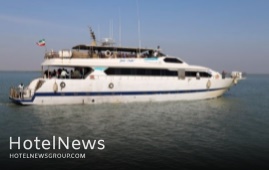
A carefully planned strategy is needed to promote maritime tourism on Iran’s northern and southern coasts, the deputy tourism minister has announced. The country should focus on developing its maritime tourism sector while preparing upstream documents, Ali-Asghar Shalbafian said, ILNA reported on Monday. Operational measures should be taken with the aim of increasing the motivation of private investors, the official added. “By partnering with the private sector in the maritime industry, and promoting the implementation of executive measures, even if they are small and infrequent, we will increase motivation to work in the field,” he explained. In order for maritime tourism to flourish, there has to be interaction and coordination at all levels of government and the private sector, he noted. Coastal and maritime tourism Over the past couple of years, the Islamic Republic has made various efforts to exploit maritime tourism potential by developing hospitality infrastructures, diversifying sea routes, and drawing private sector investors along its vast southern coasts. Prosperous maritime tourism could help the county to meet its ambitious target of attracting 20 million annual tourists by 2025. It also keeps an eye on tourism developments in the Caspian Sea in the north. Back in February, the Ministry of Tourism and the Ministry of Transport and Urban Development signed a memorandum of understanding (MOU) to develop maritime tourism and make the best use of its potential in the southern and northern coasts of the country. Promoting the culture of using the sea as a tool to increase social vitality, development of coastal activities in the form of environmentally-friendly plans and programs, and creating the necessary grounds for cooperation and exchange of knowledge and information was also among the topics of the agreement.
Create: Nov 30, 2021 Edit: Nov 30, 2021 Regional News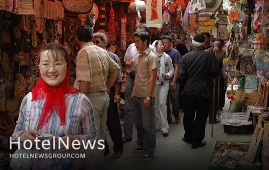
Home to one of the world’s oldest continuous major civilizations, with historical and urban settlements dating back to 7000 BC, Iran seeks to attract more foreign travelers, and in particular, vacationers from China. Iran’s deputy tourism minister on Wednesday stressed the need for all-inclusive fault detection, and identification of effective factors to expand tourism ties with China in a meeting with travel experts from the state-run institutes and the private sector. We should pay attention to the Chinese market in a more pragmatic approach,” Ali-Asghar Shalbafian said in the follow-up session held to formulate new strategies to expand tourism cooperation between the two ancient countries. So far, steps have been taken to examine the Chinese tourism market, but today the (essential) need is to implement executive measures based on [our] fault detection and macro planning,” the official noted. Insignificant numbers of Chinese restaurants, Chinese-language guides, or even inappropriate lodging facilities are deemed to be among the main reasons why Chinese arrivals in Iran fall short of expectations. Some experts believe that part of this failure comes from inside Iran because Chinese restaurants are scanty across the country while the cuisine is of high importance for the majority of the Chinese people. Moreover, Chinese travelers need fluent Chinese-language tour guides whose numbers are limited in the Islamic Republic. Last year, Tehran’s ex-ambassador to Beijing said Iran was seeking to become a tourist destination for millions of potential travelers from China as the two countries are working on a 25-year comprehensive cooperation plan that includes boosting relations in the field of tourism. Speaking in the TV program, Mehdi Safari reminded some 200 million Chinese tourists to visit different countries annually, adding “according to this agreement Iran will become one of the tourist destinations for Chinese travelers so that Iran can attract one to two million Chinese tourists to the country.” This will create a transformation in Iran’s tourism industry and will create jobs and a large market for the handicrafts industry of the country,” he expanded. In 2019, the Islamic Republic waived the visa requirement for Chinese nationals willing to visit the country. The decision was made to attract more foreign tourists to the country; however, it was a unilateral measure, because Iranian tourists visiting China still need visas. Under the 2025 Tourism Vision Plan, Iran is expecting to increase the number of tourism arrivals from 4.8 million in 2014 to 20 million by 2025.
Create: Nov 9, 2021 Edit: Nov 9, 2021 Regional News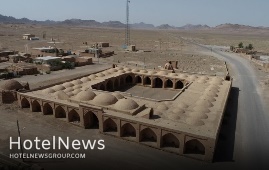
Three Qajar-era (1789-1925) caravanserais in Tabas, eastern South Khorasan province, have recently been demarcated help their legal boundaries and properties, a local tourism official has said. “New boundaries have been defined for Khan, Chehel Payeh, and Deh-e Mohammad caravanserais in a bid to curb illegal constructions within their boundaries,” Parisa Jamshidi announced on Sunday. The caravanserais, which are among the candidates for a collective inclusion in UNESCO’S cultural heritage list, has been recently restored, the official noted. Over 70 billion rials ($1.7 million at the official exchange rate of 42,000 rials per dollar) has been invested in the restoration projects of the historical inns so far, she added. Caravansary (also Caravanserai or Caravansaray) is a building that served as the inn of the Orient, providing accommodation for commercial, pilgrim, postal, and especially official travelers. According to Encyclopedia Iranica, from the number of surviving caravansaries and their sizes, it is clear that in Safavid and Qajar times there was a state architectural department that was specifically concerned with the construction of caravansaries and stations on the overland routes. Furthermore, in the cities, several caravansaries were erected as lodging houses, depots, and commercial offices in the vicinity of the bazaars. A typical caravansary consists of a square or rectangular plan centered around a courtyard with only one entrance and arrangements for defense if necessary. Whether fortified or not, it at least provided security against beasts of prey and attacks by brigands. Iran’s earliest caravanserais were built during the Achaemenid era (550 -330 BC). Centuries later, when Shah Abbas I assumed power from 1588 – to 1629, he ordered the construction of network caravanserais across the country. Such roadside inns were originally built in various epochs along ancient caravan routes in the Muslim world to shelter people, their goods, and animals. The former Silk Roads may be the most famous example dotted by caravanserais.
Create: Nov 3, 2021 Edit: Nov 3, 2021 Regional News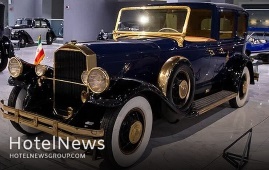
Following years of restoration and renovation, Iran Historical Car Museum in western Tehran has reopened its doors to the public, featuring a magnificent collection of rare classic, vintage, sports cars, carriages, and motorcycles.Highlights of the museum include a gold-plated limousine, the world’s only Panther-Laser car produced, a Silver Ghost Rolls-Royce once owned by the Qajar King, Ahmand Shah (r. 1909 – 1925), as well as a royal carriage belonging to Nasereddin Shah of Qajar.In an interview with the Tehran Times on Sunday, the director of the museum Mohammad Fa’al, said: “The 1922 Rolls-Royce, a Morris Oxford Bullnose, and a Fiat Tipo 519 constitute the three oldest cars of the collection.”“The building of the museum underwent restorations as of 2005 as you can see the images of the restoration of the building and cars have been installed on the walls of the museum. Moreover, we refurbished a dozen other cars from our treasury and added them to the newly-opened museum.”“The museum has four main halls, the first of which bears the oldest vehicles of the collection, amongst them the Rolls-Royce Silver Ghost that was belonging to Ahmad Shah Qajar,” he said. Hall 2 is dedicated to American and Mercedes-Benz vehicles, and Hall 3 is devoted to the official and ceremonial cars, which include various models of Rolls-Royces and Mercedes. Hall 4 is also dedicated to sports and super sports cars. In response to a question about the number of vehicles, the director said: “There are currently 102 cars in the treasury in addition to 55 cars that are currently on display.” “Of course, what you now see in here is not all our cars, and we have a treasury that acts as a support for the museum, and it has cars that are being renovated over time and replaced with these existing cars in order to preserve the charm of the museum.” The museum owns the largest collection of Mercedes-Benz 600 in the world. “We have the largest collection of Mercedes-Benz 600 in the world with 21 units. The Mercedes-Benz Museum itself has three units of the 600 model…. the Mercedes-Benz 600 itself is designed and built with different rooms and its function is only for ceremonies and this model has different rooms some having hardtop or custom-made sunroofs,” the director of the museum explained. He said that the museum owns all models of Mercedes-Benz 600, which is very unique. “Moreover, we have all models of Mercedes-Benz 600 that have been produced by the German company; four of which are on display here in the museum, and 17 are being kept inside the treasury.” Furthermore, Fa’al added 21 classic Rolls-Royces are being kept in the museum and its treasure trove. “Home to 21 [classic] Rolls-Royces, Iran Historical Car Museum is the second-largest treasure trove of those vehicles after the Rolls-Royce Museum.” Talking about the values of cars he explained, “all these cars are valuable and it is impossible to say which one is better. We can say which one is more beautiful and which has a more attractive design, but we cannot say which is more valuable.” “However, the classification of cars in terms of value depends on several factors: one is the age of the car, the other is its manufacturer brand and design technology. And there are decorative items used in cars. For instance, a car in which is gold plated and is decorated with jewelry is obviously more valuable than an ordinary one….” Responding to a question concerning restoration, Fa’al said all the processes of rebuilding cars are fully documented and all phases are photographed and evidence is available. The age of the classic cars According to Brinatica, the decade 1925–35 was notable not only for the appearance of many new small automobiles but also for the building of many ultra-large ones. The years from 1925 to 1948 are cited by collectors of automobiles as the “classic years,” a period that saw the rise of the luxurious fast motorcar to a peak it seems unlikely to reach again. The first name in this field was Rolls-Royce Ltd., founded in 1906. Most Rolls-Royce chassis are designed for limousine and large sedan bodies, but the firm once made a comparatively light car (called the Twenty), and it has throughout its history produced fast models in addition to its regular line—e.g., after World War II, the Continental, built under the Bentley Motors Ltd. label. Other motorcars of this type included the Hispano-Suiza of Spain and France; the Bugatti, Delage, Delahaye, Hotchkiss, Talbot (Darracq), and Voisin of France; the Duesenberg, Cadillac, Packard, and Pierce-Arrow of the United States; the Horch, Maybach, and Mercedes-Benz of Germany; the Belgian Minerva; and the Italian Isotta-Fraschini.
Create: Nov 3, 2021 Edit: Nov 3, 2021 Regional News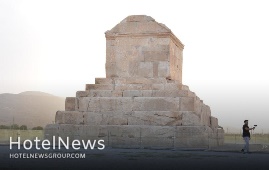
Iranian government has allocated a sum of 200 billion rials (about $4.7 million at the official exchange rate of 42,000 rials per dollar) to develop tourism infrastructure at the UNESCO-designated Pasargadae. A budget of 200 billion rials has been allocated to Pasargadae after President Ebrahim Raisi visited the Achaemenid site earlier in October, a senior tourism official, Javad Vahedi, said on Friday. The Pasargadae complex, as a magnificent World Heritage site, has a high tourism potential in the field of cultural and historical tourism, and we must plan to attract more tourists,” the official explained. Situated about 50 km north of Persepolis, Pasargadae was the first dynastic capital of the Achaemenid Empire, founded by Cyrus II the Great, in Pars, the homeland of the Persians, in the 6th century BC. Its palaces, gardens, and the mausoleum of Cyrus are outstanding examples of the first phase of royal Achaemenid art and architecture and exceptional testimonies of Persian civilization. The UNESCO World Heritage site is also home to a complex water supply system for the time that comprises cisterns, tunnels, underground canals, and ducts, which are locally known as qanats. It is believed that the development of qanats began about 2,500 or 3,000 years ago in Persia (Iran), and the technology spread eastward to Afghanistan and westward to Egypt. Although new qanats are seldom built today, many old qanats are still used in Iran and Afghanistan, chiefly for irrigation. The 160-ha archaeological site of Pasargadae presents some of the earliest manifestations of Persian art and architecture. It includes, among other monuments, the compact limestone tomb on the Morgab plain that once held Cyrus the Great’s gilded sarcophagus; Tall-e Takht (“Solomon’s Throne”), a great fortified platform built on a hill and later incorporated into a sprawling citadel with substantial mud-brick defenses; and the royal ensemble, which consists of several palaces originally located within a garden layout (the so-called “Four Gardens”). Pasargadae became a prototype for the Persian Garden concept of four quadrants formally divided by waterways or pathways, its architecture characterized by refined details and slender verticality. Pasargadae stands as an exceptional witness to the Achaemenid civilization. The vast Achaemenid Empire, which extended from the eastern Mediterranean and Egypt to the Hindus River in India, is considered the first empire to be characterized by a respect for the cultural diversity of its peoples. This respect was reflected in the royal Achaemenid architecture, which became a synthesized representation of the empire’s different cultures. Pasargadae represents the first phase of this development into a specifically Persian architecture which later found its full expression in the city of Persepolis.
Create: Oct 31, 2021 Edit: Oct 31, 2021 Regional News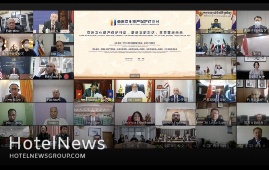
The Islamic Republic of Iran is prepared to offer expertise for the conservation of historical monuments and relics in Asia. On Thursday, Hadi Ahmadi-Roueeni, a senior official with the Ministry of Cultural Heritage, Tourism and Handicrafts announced the country’s readiness to share experience for the preservation of historical monuments with Asian countries, Iran Press reported. Establishing a fund to protect endangered cultural heritage in Asia and border-free associations of professionals in Asia as well as sharing experiences among the continental expert community would improve the conservation of the legacies, the official explained. He also called on all countries to join hands in various realms of political, academic, and professional levels to help restore the endangered historical legacies in countries suffering such problems as war, unrest, and occupation. Ahmadi-Roueeni made the remarks on Thursday on the second day of the first forum of “Asian Dialogue for Cultural Heritage Conservation” which was virtually held in China. The biggest Asian cultural heritage event is hosted by China on October 27 and 28 with the slogan of “Promoting Dialogue among Civilizations and Shaping the Future of the Asian”. According to organizers, the dialogue aims to move forward with the Asian Initiative for Cultural Heritage Conservation and open a new chapter for exchanges and mutual learning among Asian civilizations. Senior officials from 36 Asian countries and five international organizations including UNESCO, the International Council of Museums, and the International Council on Monuments and Sites participated in the conference in the form of an online meeting, Global Times reported. At the conference, the Asian Alliance for Cultural Heritage Conservation was jointly initiated by 10 Asian countries – China, Iran, Armenia, Cambodia, the Democratic People's Republic of Korea, Kyrgyzstan, Pakistan, Syria, the United Arab Emirates, and Yemen – was officially established. According to data from the UNESCO World Heritage Center, about 50 percent of the world’s endangered world cultural heritage sites are located in Asia. “Preserving our heritage is not a luxury – it is a prerequisite for ensuring that future generations can inherit an identity, a history, a voice, and a sense of ownership of their past and future,” said Xing Qu, deputy director-general of UNESCO. Xing expressed thanks to China for organizing the event and for helping to address the challenges facing cultural heritage. The ceremony also set up the Asian Fund for Cultural Heritage Conservation as a special fund to support programs and projects in conservation, research, and joint archaeology concerning cultural heritage conservation in Asia.
Create: Oct 31, 2021 Edit: Oct 31, 2021 Regional News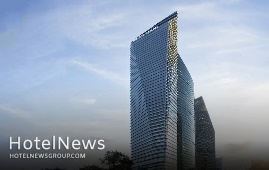
The Ritz-Carlton Hotel Company, L.L.C. is excited to announce the debut of The Ritz-Carlton, Mexico City, providing discerning travelers with a new way to discover one of the world’s most dynamic destinations. Transforming the city’s skyline and sitting amongst the country’s tallest buildings, the hotel is centrally located along the iconic Paseo de Reforma and showcases uninterrupted views of the famed Chapultepec Park. Featuring the legendary service of the brand’s Ladies and Gentlemen, each detail of the hotel is thoughtfully designed to immerse guests in the city’s rich culture and offer a unique perspective on this beloved destination. Featuring unparalleled service, The Ritz-Carlton, Mexico City celebrates legendary Mexican hospitality and offers guests a highly personalized experience. The hotel features a wide range of carefully curated amenities designed for cultural discovery and epicurean adventures or business travel, including The Ritz-Carlton Club® Lounge with an exclusive Club Concierge, a heated indoor swimming pool, large fitness center with state-of-the-art equipment and a signature Ritz-Carlton Spa with six luxurious treatment rooms. Bringing the destination to life in a unique way, The Ritz-Carlton Spa thoughtfully sources local ingredients and botanicals, which are then coupled with the healing and spiritual traditions of Mexico City’s Aztec culture. In addition to relaxing and rejuvenating treatments, the spa features an assortment of wellness areas, including steam rooms, saunas, and a timeless capsule room. Dining at Samos, the Mediterranean inspired restaurant on the 38th floor of The Ritz-Carlton, Mexico City, guests can enjoy cuisine featuring dynamic local flavors for a one-of-a-kind experience. Bringing vast luxury experience and expertise in Mexican, Italian, French, Peruvian and Argentinian cuisines, Chef Jonathan Felix has carefully created each dish to offer a culinary journey where flavors and sensations are elevated with every bite. The epicurean experiences continue through the dessert course with delicate sweets like Nido, an airy mango and passion fruit mousse encased in white chocolate and cradled by a spun sugar nest. The Ritz-Carlton, Mexico City also offers more than 4,300 square feet of meeting space with floor to ceiling windows overlooking Chapultepec Park, ideally suited for a variety of events from meetings to celebratory occasions. The spaces have been designed to foster inspiration and connection whether a large gathering in the ballroom or an intimate board meeting.
Create: Oct 31, 2021 Edit: Oct 31, 2021 International News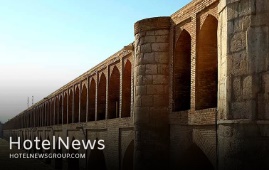
A selection of 200 “untold stories” about Isfahan is now available for you to re-discover the ancient city, which has long been nicknamed as “half the world”. Each story is narrated within a one-minute video clip in different languages to make culture lovers and avid travelers familiar with the off-the-beaten tracks, lesser-known destinations, souvenirs, foods, traditions, rituals, cultural heritage, handicrafts, and above all the hospitable people of Isfahan. Directed by Iranian globetrotter and researcher Majid Erfanian, the clips have been produced jointly by Isfahan Chamber of Commerce, Industries, Mines and Agriculture (ICCIMA), and the private company of Rah Abrisham Iranian Zamin. 100 of the videos, containing 100 fascinating stories, had already been uploaded to social media outlets, while the others were unveiled in an official ceremony hosted by the ICCIMA on Saturday evening. The event was attended by the deputy tourism minister Ali-Asghar Shalbafian, Isfahan governor-general Seyyed Reza Mortazavi, the mayor of Isfahan Ali Qasemzadeh, and Alireza Salarian, the head of Representative Office of Ministry of Foreign Affairs in Isfahan as well as a host of travel insiders, reporters, and journalists who discussed ways to jumpstart tourism. Erfanian stressed the need for greater public awareness about the cultural heritage of the ancient land, saying the “untold stories” are produced for that purpose. “Redefining destinations has rarely happened in the field of traveling [in the country], and now the city [of Isfahan] is a forerunner of such a trend to express its tourism brand in a new way,” he said. Talking about the clips, Erfanian said” “In these multi-language videos, we have tried to put the spotlight on inaccessible or lesser-known historical sites, foods, intangible heritage, people…. characters, craftsmen and figures who have played a role in shaping the identity of Isfahan.” “Sister cities of Isfahan, the diversity of religions, and intangible heritage are amongst other elements we have addressed in the videos,” he added. In an address to the unveiling ceremony, the deputy tourism minister used the context of modern architecture to discuss ways to highlight contemporary Isfahan shoulder to shoulder with its historical core. “We see in the videos that they mostly bring centuries-old architecture and culture into focus, however, we should consider casting a new light on the modern side of Isfahan as well.” “In the production of extra videos, newer ideas may be added to improve the quality of the work,” Shalbafian added. The governor-general of Isfahan reminded the attendees of the unique feature of stories and narratives, in general, to preserve cultural heritage for the coming generations. “In all over the world, paying attention to stories and narratives is of special importance for the development of tourism….. and we have many of such stories that have been forgotten in the course of history.” What you have done in this project is to revive such stories and distinct identities that if ignored, will lead to their disappearance, Mortazavi explained. Ali Karbasizadeh, a senior advisor to the ICCIMA, expressed the need for paying much more attention to the tourism industry, content production, training of all stakeholders and activists, conducting relevant studies, productive investments, tourism startups, and further cooperation with other provinces to develop the tourism paradigm of the country. Furthermore, Karbasizadeh discussed the advantage of adequate official holidays in Iran, saying the number of national holidays in Iran, which has a pivotal role in domestic tourism, is currently insufficient in comparison to many other countries. “If this issue is not addressed and solved, our efforts in other areas would not have desired results.” Salarian for his part noted that making one-minute videos of Isfahan is a good fit. “When we sent [some of the earliest] clips of the series to our embassies in various countries, they expressed a wish to have them translated into other languages as well….Now I see that this has happened.” “Even the municipality [of Isfahan] has produced a series of professional five-minute videos in ten languages that are well received by the audiences.” “Isfahan is one of the important destinations for the high-ranking Iranian officials and visiting officials from other countries. Therefore, it has a unique stance in the field of tourism that should be taken into account,” the senior diplomat explained. Finally, the mayor of Isfahan outlined the importance of storytelling for the time being and in various fields including tourism, saying: “Story [and storytelling] still works in the present day even in psychiatric discussions, story therapy is a growing concept.” “We are ready to expand cooperation and join hands with other activists in the realm of tourism because Isfahan has enormous potential to become a major destination for international travelers,” Qasemzadeh said. Half the world? Soaked in a rich history, Isfahan was once a crossroad of international trade and diplomacy in Iran and now it is one of Iran’s top tourist destinations for good reasons. It is filled with many architectural wonders such as unmatched Islamic buildings, bazaars, museums, Persian gardens, and tree-lined boulevards. It's a city for walking, getting lost in its mazing bazaars, dozing in beautiful gardens, and meeting people. Isfahan is renowned not only for the abundance of great historical bridges but also for its ‘life-giving river’, the Zayandeh-Rood, which has long bestowed the city an original beauty and fertility. Isfahan has long been nicknamed as Nesf-e-Jahan which is translated into “half the world”; meaning seeing it is relevant to see half the world. In its heyday, it was also one of the largest cities in the region with a population of nearly one million. The cool blue tiles of Isfahan's Islamic buildings, and the city's majestic bridges, contrast perfectly with the encircling hot, dry Iranian countryside. The huge Imam Square, best known as Naghsh-e Jahan Sq. (literary meaning “Image of the World”), is one of the largest in the world (500m by 160m), and a majestic example of town planning. Constructed in the early 17th century, the UNESCO-registered square is punctuated with the most interesting sights in Isfahan. It was laid out under the reign of the Safavid ruler, Shah Abbas the Great, to signal the importance of Isfahan as the capital of his powerful empire. It is hemmed on four sides by magnificent buildings: to the east, the Sheikh Lotfollah Mosque; to the west, the palace of Ali Qapu; to the north, the portico of Qeysarieh; and to the south, the eminent Imam Mosque. “The square was at the heart of the Safavid capital’s culture, economy, religion, social power, government, and politics. Its vast sandy esplanade was used for celebrations, promenades, and public executions, for playing polo and for assembling troops,” according to the UNESCO website. Right at the northern limit of the Imam Square, one will find “Qeysarieh Gate”, which leads to the unique and unforgettable “Grand Bazaar of Isfahan”. This vaulted marketplace is one of the largest and most labyrinthine bazaars in the country. Shops offering handicrafts, souvenirs, jewelry, silverware, traditional ceramics, and authentic Persian carpets. Modern Isfahan is now home to some heavy industry, including steel factories and a nuclear facility on its outskirts, however, its inner core wants to be preserved as a priceless gem. The city is also home to a gigantic, professional, and state-of-the-art healthcare city, which is a major destination in the realm of medical tourism. Unknown destination Even before the pandemic, Iran’s tourism was already grappling with some challenges, on top of those Western “media propaganda” aimed at scaring potential travelers away from the Islamic Republic. Some experts believe Iran is still somehow “unknown” for many potential travelers due to such a “media war”. They, however, consider bright prospects for the tourism sector of the country if it vigorously pursues comprehensive strategies to counter U.S.-led propaganda and strict sanctions, yet does its best to loosen tough travel regulations.
Create: Oct 26, 2021 Edit: Oct 27, 2021 Regional News
IHG® Hotels & Resorts, one of the world’s leading hotel companies, has signed a management agreement with notable real estate developer, Dinesh Kumar Choudhary (HUF) for a new hotel – Holiday Inn Express & Suites Jaipur Karoli Bagh located at Gopalpura Byepass, in the capital of Rajasthan. The brownfield hotel featuring 141 keys is expected to be operational by the first quarter of 2023. Jaipur is the largest city in Rajasthan and one of the most popular leisure destinations, both for domestic and international travellers. It is an integral part of the Golden Triangle, a prominent tourist circuit connecting the national capital Delhi, Agra and Jaipur, and is also a preferred wedding destination in India. Furthermore, the city houses numerous industries and is considered as the economic capital of Rajasthan. With the new signing of Holiday Inn Express & Suites Jaipur Karoli Bagh, the city will now have three IHG hotels between Crowne Plaza, Holiday Inn and Holiday Inn Express, catering to varied guest profiles. Holiday Inn Express & Suites Jaipur Karoli Bagh will be located on the Gopalpura Bypass road, at a convenient 15-minute drive from the airport. The hotel will also be at a short driving distance from the city centre, business district, tourist attractions, as well as key dining and shopping destinations. With excellent visibility and access, Holiday Inn Express & Suites Jaipur Karoli Bagh will provide a convenient stay experience to both business and leisure travellers. The newly signed hotel will feature well-appointed modern guest rooms and all the necessary facilities for a comfortable stay experience. The hotel will also have the brand’s signature ‘Great Room’, ‘Small Bar’, a specialty restaurant and a lounge to relax and unwind. Other essential facilities will include a fitness room, and meeting spaces for business and social gatherings. Commenting on the new development, Sudeep Jain, Managing Director, South West Asia, IHG Hotels & Resorts, said, “We are thrilled to announce the signing of a new Holiday Inn Express & Suites hotel in Jaipur and solidify our presence in the state of Rajasthan. With a rich culture, history and cuisine, Jaipur is one of the most popular tourist destinations of India. With diverse guest profiles visiting the city, there is an increasing need for mainstream accommodation, and we are confident that Holiday Inn Express & Suites Jaipur Karoli Bagh will be a great choice for travellers looking for a simple and engaging hotel stay experience. He added: this new signing is also in line with our strategy to expand our ‘essentials collection’ across key markets in India and further strengthen our mainstream presence in the country, in line with market demands.” Mr. Dinesh Kumar Choudhary, Head of Hindu Undivided Family (HUF) added, “We are excited to partner with an internationally and domestically known and trusted hospitality brand like IHG. With a combination of an excellent location, the power of IHG’s distribution system, strong loyalty programme and expertise in the hospitality segment, we are confident that Holiday Inn Express & Suites Jaipur Karoli Bagh will emerge as a popular choice amongst the travellers visiting Jaipur.” Holiday Inn Express is one of IHG’s fastest-expanding hotel brand. It is designed for the smart travellers who are looking for a simple, yet engaging place to reconnect and refresh. IHG® currently has 41 hotels operating across five brands in SWA, including Six Senses, InterContinental Hotels and Resorts®, Crowne Plaza®, Holiday Inn® , Holiday Inn Resort® and Holiday Inn Express®, and a strong pipeline of 50 hotels due to open in the next 2-3 years.
Create: Oct 25, 2021 Edit: Oct 25, 2021 International News
Courtyard by Marriott will return to the Dupont Circle neighborhood in Washington, D.C., boasting a meticulous redesign and ready to host guests beginning in November 2021. Centrally located at 1733 N Street NW in a vibrant and historic mixed residential and commercial neighborhood, the anticipated hotel is tucked away among picturesque row houses and parks, but just steps away from Embassy Row, the Cathedral of St. Matthew the Apostle, and the National Geographic Museum. Courtyard by Marriott, Washington DC Dupont Circle will be suitable for all types of travelers. Central among a myriad of attractions in the nation’s capital, the hotel provides a welcome respite for professionals conducting business in the area, a convenient jumping off point for tourists visiting historical monuments, or locals exploring the diverse and exciting restaurants and shops of Embassy Row. Nestled in the charming Dupont Circle neighborhood, guests will also find themselves surrounded by many nearby parks, including Rock Creek Park, Dupont Circle Park, Stead Park, Farragut Square, and others. And just a few blocks from the Metro (Red – Dupont Circle), location is truly everything – offering affordable and efficient access to Union Station, all three major international airports, and points across the entire region, including the waterfront Navy Yards district, Arlington Cemetery and the United States Capitol building. The Dupont Circle iteration of Courtyard elevates the guest experience with a mid-century modern, innovative redesign, featuring stylish tones of burnt orange, royal blue and silver, along with contemporary custom furniture and the latest technology to stay connected. With 10 stories and 143 spacious guest rooms available in both King and Double Queen configurations, patrons will enjoy large windows that provide an abundance of natural light and views of the picturesque and bustling neighborhood. Each room offers 100% black-out shades to ensure that guests will awaken refreshed and each room also offers a large working desk to foster creativity and productivity. Guests may also enjoy the hotel’s SMART TVs featuring Netflix, Hulu, and other streaming platforms. The sleek lobby welcomes visitors with contemporary, flexible spaces for business and leisure travelers alike with check in pods and semi-private high-backed booths that feature built-in monitors conducive to meetings or relaxing while enjoying the hotel’s free WiFi. The hotel also offers a spacious fitness center with strength training and cardio equipment for guests to stay reinvigorated and energized. The hotel’s redesign also features two food & beverage options adjacent to the hotel lobby. The Bistro will offer a fast-casual dining environment with fresh, made-to-order options. This dining area is an ideal spot for guests to gather with colleagues or friends and enjoy the full-service food and bar offerings. The Crate, also located in the lobby, features a 24/7 ready-made concept for those who are on the go. The new prototype for Courtyard is making its regional debut in the Dupont Circle location, with packaged items offered in a grab-and-go, contactless setting. This Courtyard by Marriott in Dupont Circle will be the fifth in the nation’s capital and its new location’s modern redesign transforms the brand’s footprint in the Washington, D.C. region as it serves both business and leisure guests. Courtyard by Marriott’s return to the Dupont Circle area offers guests an opportunity to experience a quiet and localized neighborhood filled with tree-lined streets and historic homes while also enjoying the conveniences of a city center hotel.
Create: Oct 16, 2021 Edit: Oct 16, 2021 International News
